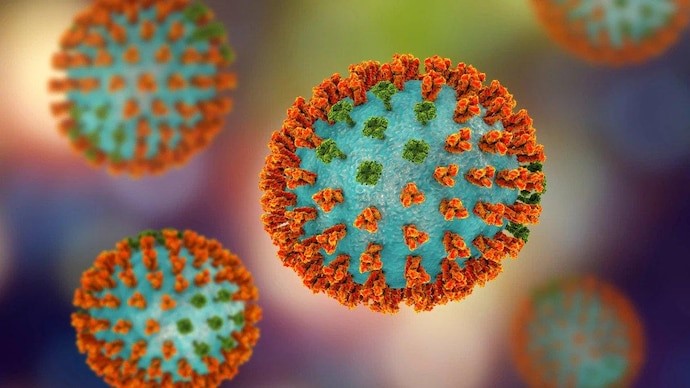Description

Disclaimer: Copyright infringement not intended.
Context
- India has recorded deaths of two people, one each in Karnataka and Haryana, due to the Influenza A subtype H3N2 virus.
What is the H3N2 virus?
- Influenza viruses, which cause the infectious disease known as flu, are of four different types: A, B, C and D. Influenza A is further classified into different subtypes and one of them is the H3N2.
- H3N2v is a non-human influenza virus that normally circulates in pigs and that has infected humans - known as ‘swine influenza viruses’. When these viruses infect humans, they are termed 'variant' viruses. The specific H3N2 variant virus was detected in 2011 in humans with genes from avian, swine, and human viruses and the 2009 H1N1 pandemic virus M gene.
- H3N2 caused the 1968 flu pandemic that led to the death of around one million people globally and about 100,000 in the US.
- A 2020 study, published in the journal Nature Communications, found that the strains of the virus have dramatically evolved in the past five decades as people born in the late 1960s and 1970s got infected by it as children.
.jpeg)
What are the symptoms of H3N2?
- Its symptoms are similar to that of any other flu. They include cough, fever, body ache and headache, sore throat, a runny or stuffy nose and extreme fatigue. Nausea, vomiting and diarrhoea have been seen in very few cases.
- An infection caused by H3N2 generally lasts for five to seven days and the fever starts going away after three days. However, the coughing can persist for up to three weeks.
Which age group is more vulnerable?
- This virus usually preys on individuals below the age of 15 years or above 50 years of age.
- Children and those with co-morbidities like asthma, diabetes, heart disease, weakened immune systems and neurological or neurodevelopmental conditions are at a higher risk.
Transmission
- H3N2 influenza is highly contagious and can spread from person to person through droplets generated when an infected person talks, coughs, or sneezes.
- It can also spread by touching a surface contaminated with the virus and then touching one's mouth or nose. People who are at high risk of complications from the flu include pregnant women, young children, older adults, and people with underlying medical conditions.

How to prevent it from spreading?
- Self-hygiene is the best way to thwart the spread of H3N2.
- Washing hands before eating or touching your face, nose or mouth, carrying pocket sanitiser, and avoiding people already infected with the virus or any other seasonal flu are some of the steps one can take to make sure they don’t fall sick due to the H3N2 infection.
- Moreover, a healthy diet that includes plenty of fruits and vegetables can also play a significant role in improving immunity. The doctor added that drinking a lot of fluids, and eating home-cooked, low-spice and low-fat food can also help.
Treatment options
- Taking proper rest, drinking lots of fluids and using over-the-counter painkillers like acetaminophen or ibuprofen to lower fever are all part of the H3N2 influenza treatment regimen. If a patient has severe symptoms or is at a high risk of problems, a doctor may also recommend antiviral drugs such as oseltamivir and zanamivir.
- WHO further says that in suspected and confirmed cases, neuraminidase inhibitors should be prescribed as soon as possible (ideally, within 48 hours following symptom onset) to maximize therapeutic benefits.
- To prevent H3N2 influenza, it is essential to take some measures such as receiving a flu vaccine annually.
Read: https://www.iasgyan.in/daily-current-affairs/bird-flu-30
|
PRELIMS PRACTICE QUESTION
Q. Choose the incorrect answer with reference to the following statements.
A. H3N2 influenza is highly contagious and can spread from person to person through droplets generated when an infected person talks, coughs, or sneezes.
B. To prevent H3N2 influenza, it is essential to take some measures such as receiving a flu vaccine annually.
1. A only
2. B only
3. Both A and B
4. Neither A nor B
Answer: 4
|

https://indianexpress.com/article/explained/explained-health/h3n2-virus-deaths-india-symptoms-prevention-8489731/











